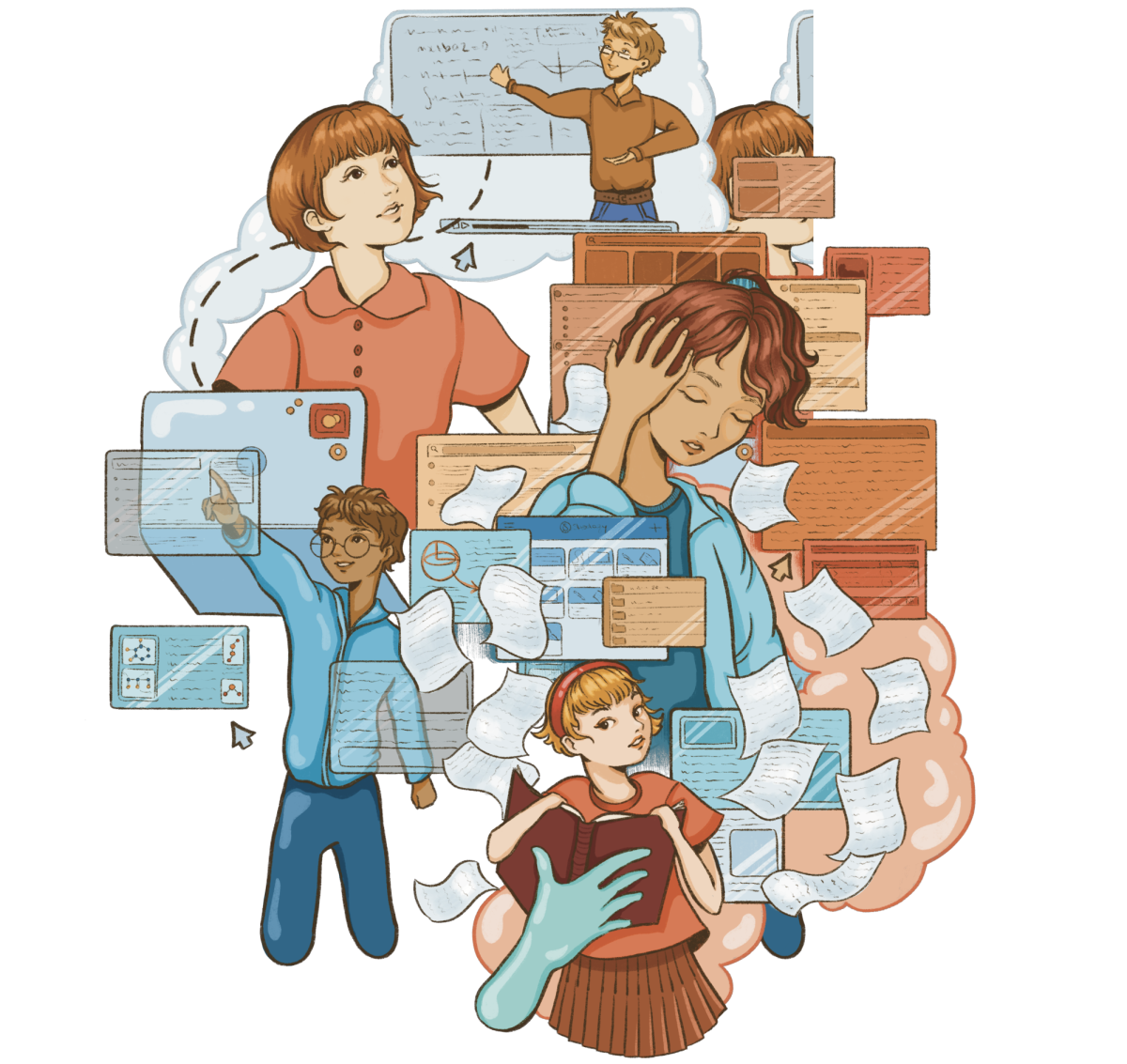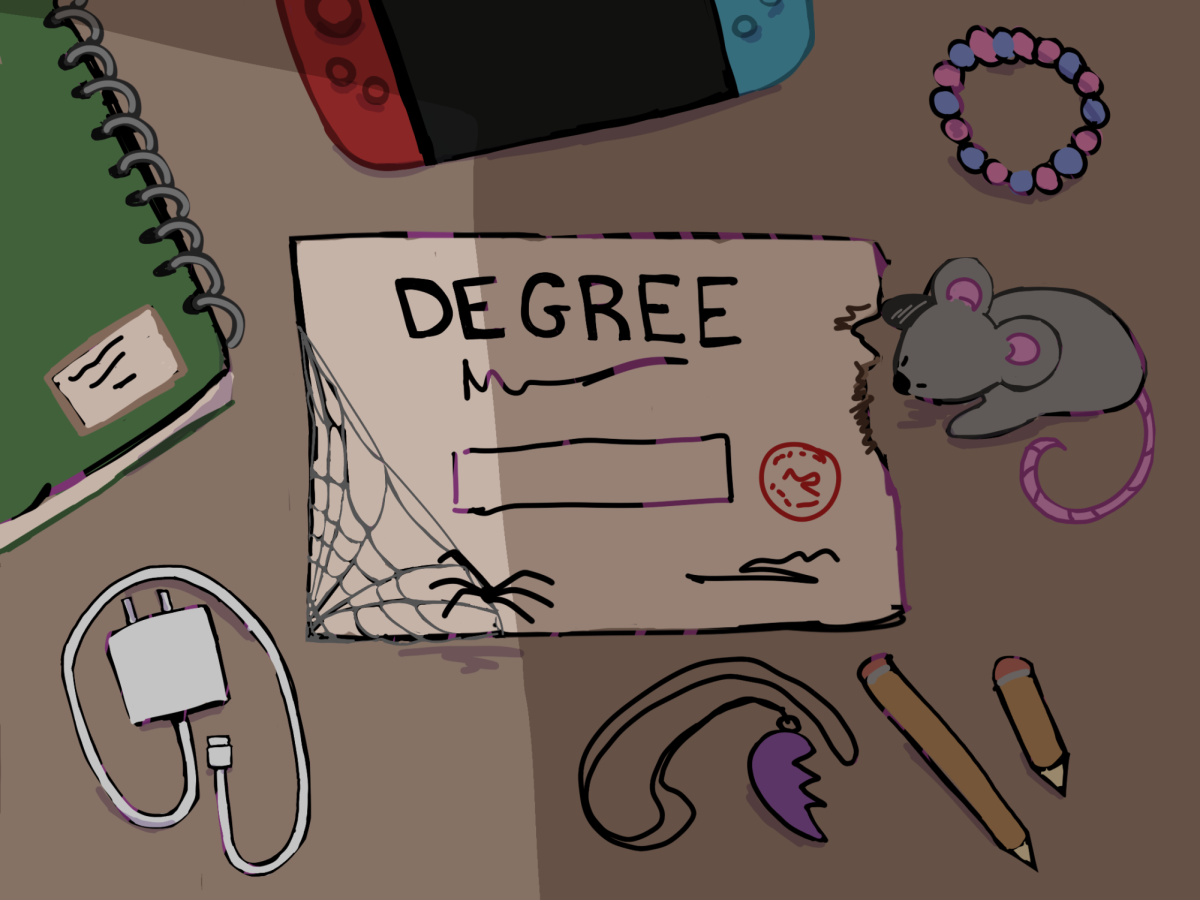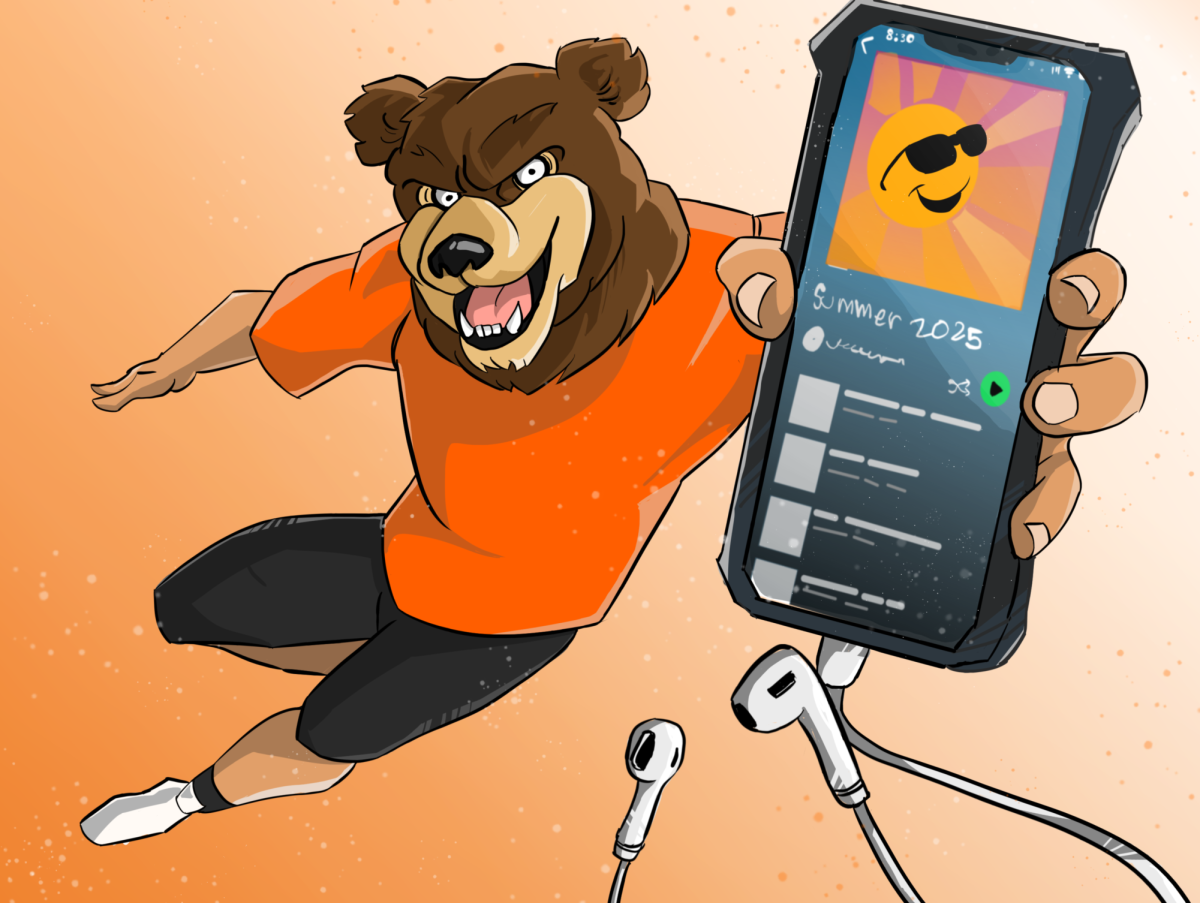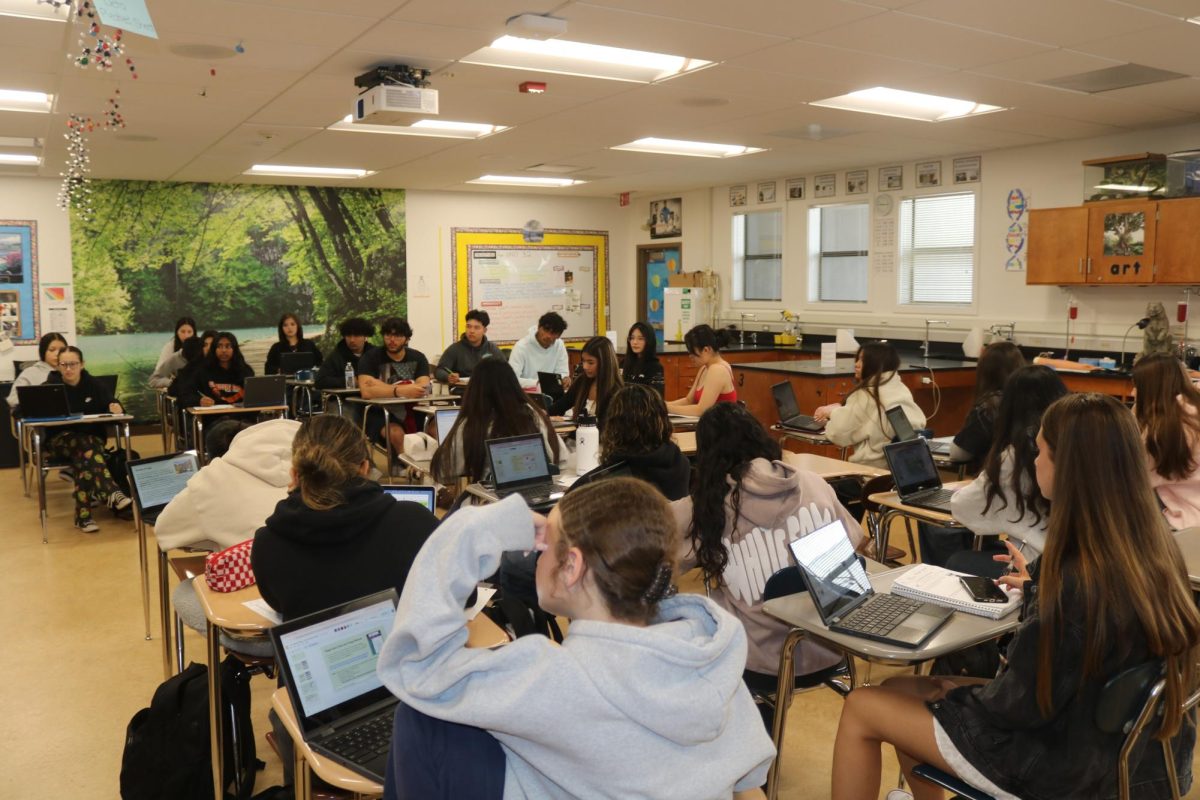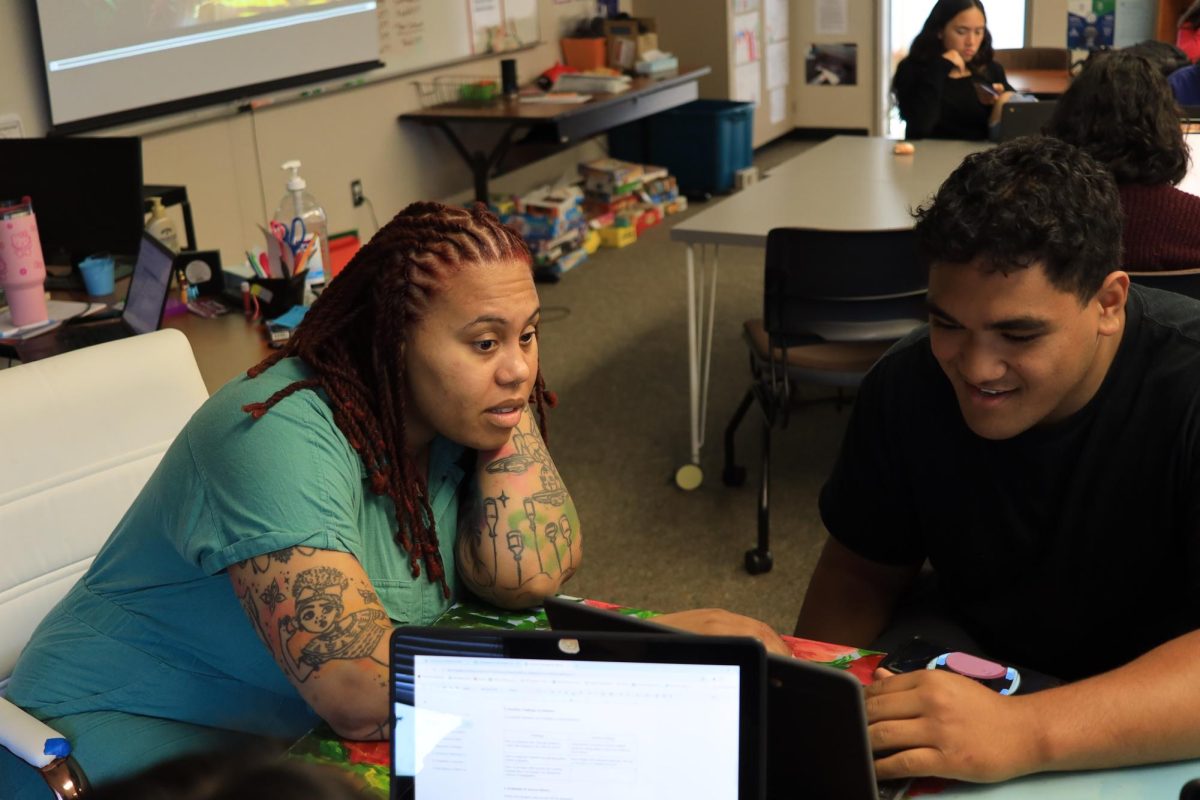Staring at computers all day has become the standard since the COVID-19 pandemic.
During the lockdown, lectures, resources and tests were all moved online because it was the only option for teachers. But some of these practices were continued when school moved back to in-person.
Now, teachers use a variety of different digitized education tools in classrooms, ranging from homework to tests.
Online Resources
When in-person school returned full time for the 2021-22 school year, many aspects of learning shifted from traditional paper to online. From ebooks to platforms such as Schoology and AP Classroom to student Chromebooks, digital technology has transformed education at Cal High and beyond.
Although Cal has been conducting in-person learning for three years since the pandemic shut down schools for the 2020-21 school year, the effects of remote learning linger. According to The Californian’s survey of 37 Cal teachers, 32 said they use some form of digital learning in their classrooms.
In the survey, most Cal teachers reported conducting about half of their class online, using resources such as Schoology, Google Docs, YouTube, and ebooks to further guide their teaching.
Calculus teacher Namita Vakil mostly has her students write on paper, but still utilizes technology as a resource.
“In my classes I give a lot of handouts, but there’s a lot of stuff that I find online that I just post for extra practice,” Vakil said.
She believes there is no harm in using online resources in the classroom, but it depends on how the technology is utilized and how much it is relied on.
Junior Suhaila Julka said her math class offers a physical textbook but most of her classmates use the online PDF version since it is more convenient. She said it is easier to access everything needed for her classes online.
Sophomore Arina Utko said that she uses Google Docs, WebAssign, and Schoology in her classes daily.
“You no longer feel the need to have to sit there and listen to the teacher,” Utko said. “You can just go online to find the slides the teacher used.”
One of the biggest changes in learning has occurred as a result of the district distributing personal Chromebooks to students.
The Institute of Education Sciences estimates that 45 percent of schools in the United States had a computer for each student in 2019-20 school year.
Students are able to keep their own school-issued Chromebook until they graduate, making online resources more accessible despite learning taking place in the classroom.
“On one hand it’s easier to have everything confined to your computer and not carry a bunch of papers around,” senior Ella Faust said. “But I think for me having work on paper is easier.”
The change away from traditional learning has impacted more than just the classroom.
“There has been a shift in what [the library] collects,” Cal librarian Nicole Ogden said.“We don’t have shelves of encyclopedias. We instead use our online databases.”
Cal’s library also loans Chromebooks, chargers, and ebooks, and assists students with finding sources online instead of just in books.
“Either we would be teaching [students] to research in books or we teach them how to do it online,” Ogden said. “Now we teach them how to do both.”
Digital resources in the classroom have provided new tools for students, but they can also lead to technical difficulties. Faust said technology can be unpredictable and noted that she has sometimes been unable to turn in her homework on time because Schoology crashed.
“You always have to take into account that technology could crash,” Faust said.
Ogden also noted how technology can be a distraction in the classroom.
“I think that one of the things that everyone is still adjusting to is the distraction that Chromebooks can be,” Ogden said “It’s very hard to pay attention when you could have eight tabs and be doing anything you want online.”
The risk of distraction that technology poses has caused some teachers to shift back to using paper resources.
Marine Biology teacher Jake Martin said he is trying to reduce the use of technology in his classes. He said the over-reliance on technology led to students cheating.
Online Testing
Similar to the trend of learning moving online, tests have progressively been administered in digital formats as well. With these changes come both concerns and benefits.
“[Online testing] helps reduce cheating in my class,” social studies teacher Ryan Anderson said. “And most kids like having immediate feedback.”
Anderson said digital testing greatly speeds up the process of creating, grading and learning from tests. Switching to online testing and learning also helps the environment by saving paper, Anderson added.
Although digital testing is efficient and saves a lot of paper, there are concerns about security and glitches.
“I’m not the most tech savvy person. Other teachers aren’t the most tech savvy people,” Anderson said. “So if the tests were to somehow get leaked or hacked, those are definitely concerns.”
These concerns were validated when the newly online AP Literature and Composition (AP Lit) Exam last year encountered technical difficulties that forced students taking the test nationwide to retake it at a later date on paper. Because of these difficulties, the AP Lit exam has returned to a paper format this year.
College Board, which organizes these standardized tests, clarified that although issues were present, they’ve been resolved. But concerns still linger.
“There’s always that area of uncertainty with digital testing,” senior and AP Lit student Sumedha Varanasi said. “Paper’s the safer option.”
Although paper tests have proven to be more reliable, some students still prefer digital tests because of advantages like being able to edit work easily.
“Being able to go back and neatly edit your essays is super important,” senior AP Lit student Kiran Abraham said. “I perform better with a digital test.”
According to a survey conducted by The Californian, 21.6 percent of classes conduct the majority of their tests online while 78.4 percent still use paper tests.
“[Digital testing is] something that we’re all going to be doing and there’s a lot of different ways that it has been a good transition,” college and career counselor Kathryn Nichols said.
But the transition to digital learning extends far beyond Cal, as many other standardized, nationwide tests have made this move as well.
While classrooms have been slowly adopting digital testing, many AP tests have been online for years already, like AP Chinese.
The PSAT and SAT have long been two of the most important tests for admission into college. Similar to classroom and AP testing, both the PSAT and SAT are moving to digital formats as well.
The digitized version of the PSAT was taken by Cal students in October. The SAT has moved online for international locations and the US will follow suit in spring of 2024.
“Due to the digital SAT being dynamic, it changes based on how much you get right, it was pretty challenging,” said junior Jay Rao, who took the digital SAT in India before moving back to California. “As long as there’s good solid practice for it, I think it’ll be the same as the paper SAT.”
The sudden decision to make both of these tests digital is in part because of the acceleration of digital learning due to the pandemic, the College Board explained.
“Students are now doing more of their learning and testing digitally, and the SAT shouldn’t be the exception,” the College Board wrote on its website.
The trend of digitized learning has raised debate over the topic.
“I definitely get why we switched to online, easier grading and all that stuff, but in the long run, for students, I feel like paper is much better,” Varanasi said.
Students also pointed out that digital learning as a whole can take some getting used to, especially for upperclassmen.
“To people who have been doing digital learning since the beginning, I think they’re fine, but to people like us, juniors, seniors who have been doing it differently since we started our schooling career, it’s a little bit difficult for us,” Rao said.
Other students and teachers take a more neutral stance on digital testing.
“Some people can view it as a good thing, others can view it as a bad thing,” Abraham said. “At the end of the day, it depends on what type of test it is.”
Vakil said that while she thinks digital testing can be good for formative assessments and extra credit, it’s hard to use it for summative assessments as it doesn’t allow the teacher to gauge learning as well.
But students and staff agree that digital testing is here to stay. The only question is how it is going to be balanced with paper testing.
The increasing access to technology in education is transforming the process of learning and teaching in schools around the world.
Learning shifts to online platforms
Students and teachers have differing perspectives on digital resources and testing in school
November 9, 2023
Story continues below advertisement
More to Discover
About the Contributors

Audrey Goddard, Staff Writer
Audrey Goddard is a senior joining The Californian for the first time as a staff writer. She hopes to further develop her writing skills and explore new writing techniques during her time in the newspaper. In her free time, she loves to write poetry, read, and make jewelry.

Susanne Soroushian, Artist
Senior Susanne Soroushian is an artist for The Californian. She was a freelance artist in her junior year and now she’s joined the newspaper full-time. Other than being an illustration enthusiast, she enjoys geeking out about any animated film ever made, drawing random people in her sketchbook, shooting arrows in the archery range and playing Animal Crossing for an unhealthy amount of time.
